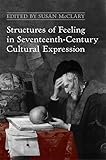Structures of Feeling in Seventeenth-Century Cultural Expression / Susan McClary.
Material type: TextSeries: UCLA Clark Memorial Library SeriesPublisher: Toronto : University of Toronto Press, [2013]Copyright date: ©2013Description: 1 online resource (400 p.)Content type:
TextSeries: UCLA Clark Memorial Library SeriesPublisher: Toronto : University of Toronto Press, [2013]Copyright date: ©2013Description: 1 online resource (400 p.)Content type: - 9781442640627
- 9781442685857
- 306.409032
- NX650.E46 S77 2013
- online - DeGruyter
| Item type | Current library | Call number | URL | Status | Notes | Barcode | |
|---|---|---|---|---|---|---|---|
 eBook
eBook
|
Biblioteca "Angelicum" Pont. Univ. S.Tommaso d'Aquino Nuvola online | online - DeGruyter (Browse shelf(Opens below)) | Online access | Not for loan (Accesso limitato) | Accesso per gli utenti autorizzati / Access for authorized users | (dgr)9781442685857 |
Browsing Biblioteca "Angelicum" Pont. Univ. S.Tommaso d'Aquino shelves, Shelving location: Nuvola online Close shelf browser (Hides shelf browser)

|

|

|

|

|

|

|
||
| online - DeGruyter Latin Poets and Italian Gods / | online - DeGruyter Against Reproduction : Where Renaissance Poems Come From / | online - DeGruyter Perceptions of Cuba : Canadian and American Policies in Comparative Perspective / | online - DeGruyter Structures of Feeling in Seventeenth-Century Cultural Expression / | online - DeGruyter Beyond Expectation : Assisted Conception and the Politics of Recognition / | online - DeGruyter Gender, Politics and Society in Ukraine / | online - DeGruyter The Appeal of Insurance / |
restricted access online access with authorization star
http://purl.org/coar/access_right/c_16ec
Between the waning of the Renaissance and the beginning of the Enlightenment, many fundamental aspects of human behaviour - from expressions of gender to the experience of time - underwent radical changes. While some of these transformations were recorded in words, others have survived in non-verbal cultural media, notably the visual arts, poetry, theatre, music, and dance. Structures of Feeling in Seventeenth-Century Cultural Expression explores how artists made use of these various cultural forms to grapple with human values in the increasingly heterodox world of the 1600s.Essays from prominent historians, musicologists, and art critics examine methods of non-verbal cultural expression through the broad themes of time, motion, the body, and global relations. Together, they show that seventeenth-century cultural expression was more than just an embryonic stage within Western artistic development. Instead, the contributors argue that this period marks some of the most profound changes in European subjectivities.
Mode of access: Internet via World Wide Web.
In English.
Description based on online resource; title from PDF title page (publisher's Web site, viewed 01. Nov 2023)


